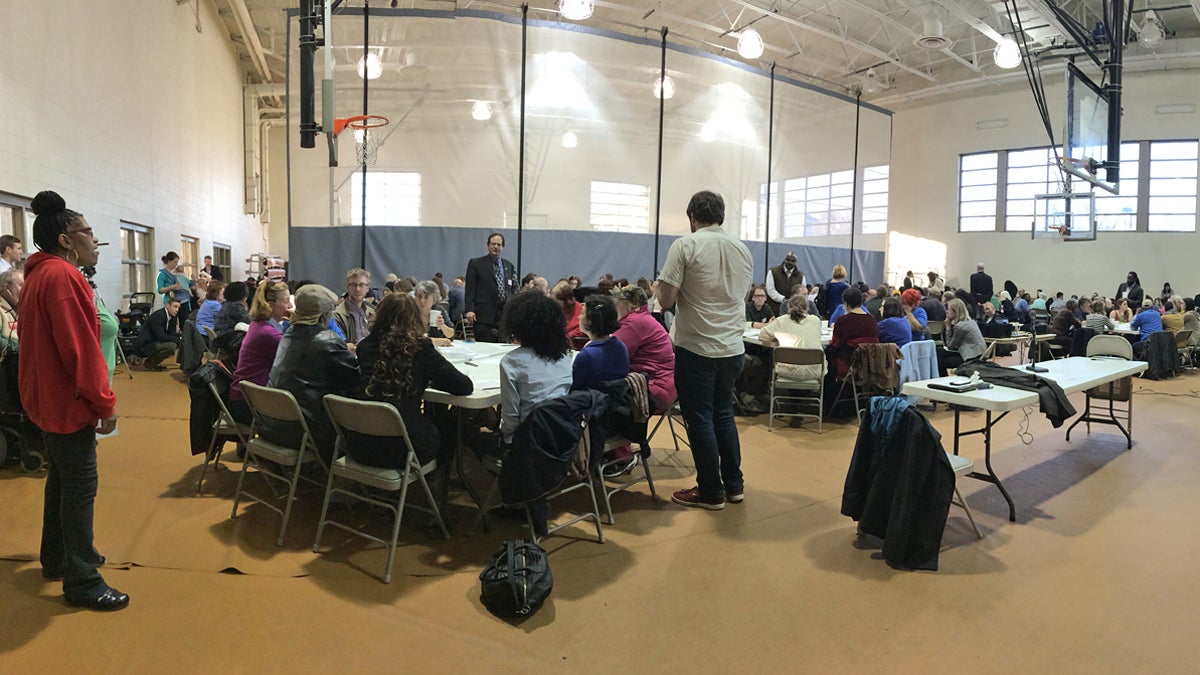Ideas Worth Stealing: Vermont town meetings

On March 29
Every year, on the first Tuesday in March, Vermonters gather for Town Meeting.
Every year, on the first Tuesday in March, Vermonters gather for Town Meeting. In New England “town meeting” is not a catchall term for public meetings or input sessions or sitdowns with politicians who might get a little folksy; town meeting denotes a structured gathering. And in Vermont, it effectively means 242 separate citizen legislative bodies are called into session (Vermont’s nine cities are not governed by town meeting).
In fire halls and school auditoriums across the state, residents gather to hear from the selectboard — a town’s executive body — and vote on issues of governance and finance. Individuals ask questions, make speeches, and amend items on the agenda. Then they vote, and those votes are binding. The meeting often lasts all day, usually broken up with a much-anticipated potluck lunch.
“There’s a lot of graciousness that needs to happen in public engagement,” said Susan Clark, a town meeting moderator and author of two books about local and deliberative democracy. “We understand that you’re a person and not just a democraton.”
Town Meeting is a rare example of direct democracy, Clark said.
“Most of the time when we’re asked to engage with government, we are being asked to elect people to do our governing for us.”
Though the initiatives and referendum system in some western states, and jury duty also qualify as direct democracy, Clark says the former is a comparatively blunt instrument.
“[That] gives you a vocabulary of two words: yes or no,” she said. “And that’s really limiting.”
Direct democracy tends to get a lot of credit for being a “pure” expression of the will of the people, said Robert Williams, constitutional law professor at Rutgers University School of Law. However, he says, it too often favors the majority and drowns out dissenting opinions.
Pa. had its own interesting form of government
Pennsylvania may look aloof compared to the please-pass-the-pie familiarity of Vermont, but in the infancy of its statehood, Pennsylvania flirted with a more direct model of governance than any of the other colonies were willing to entertain. Its 1776 constitution provided for a unicameral legislature with no checks. There was no strong executive and no independent judiciary. The only real oversight was an audit every seven years by the taxpayers.
“The idea of a government that doesn’t have [checks and balances] is kind of dangerous,” Williams said.
The “mobocracy” (as Benjamin Rush called it) created by the Pennsylvania government informed the structure of the federal constitution — by being exactly what Pa. wasn’t. But with the addition of one more adjective, direct democracy doesn’t have to be all or nothing, yes or no, said Clark: Enter direct deliberative democracy.
Direct deliberative democracy
At its core, direct deliberative democracy engages people in a discussion around an issue. They share ideas, opinions, and experiences, and then there’s an action. In Vermont, that action takes the form of a binding vote, but in other places it could be recommendations to city council.
“The most important thing is that two-way communication builds a sense that government is a we and not a they,” said Clark.
While about 625,000 people live in Vermont, Pennsylvania’s population is 20 times that. Could we gather together once a year for a rousing bout of self-governance? Could it work?
“Absolutely! As long as you’re realistic about scale and modify the model,” said Clark. “It turns out that size matters.” More than 2,500 people and per capita participation starts to decline. So Clark suggested something called a representative town meeting, in which 150 members are elected to, you guessed it, represent the larger community.
But say you wanted the larger community, all of it, every last voting-age citizen, to sit around large tables in a gym and figure it out together.
“There’s nothing intrinsically prohibitive about having a day, maybe a Saturday, for citizens [of an entire state] to go to their local communities,” said Robert Cavalier, director of the Program for Deliberative Democracy at Carnegie Mellon University. “But the structure of those events would be labor-intensive,” he said. Instead of an in-gathering of 12 million, Cavalier suggests using the tools of deliberative democracy to convene people on specific issues at the neighborhood level. Pittsburgh has already used deliberative community forums to select a new police chief, examine affordable housing, and present the 2016 capital budget.
That’s the beautiful thing about deliberative democracy, says Clark: it doesn’t have to be written into the municipal code to become part of a community’s civic life. And it builds a dynamic, responsive democracy, she said, because it makes room for people.
“It’s really not about my truth winning out over your truth, it’s not A versus B. It’s let’s co-create C.”
WHYY is your source for fact-based, in-depth journalism and information. As a nonprofit organization, we rely on financial support from readers like you. Please give today.


